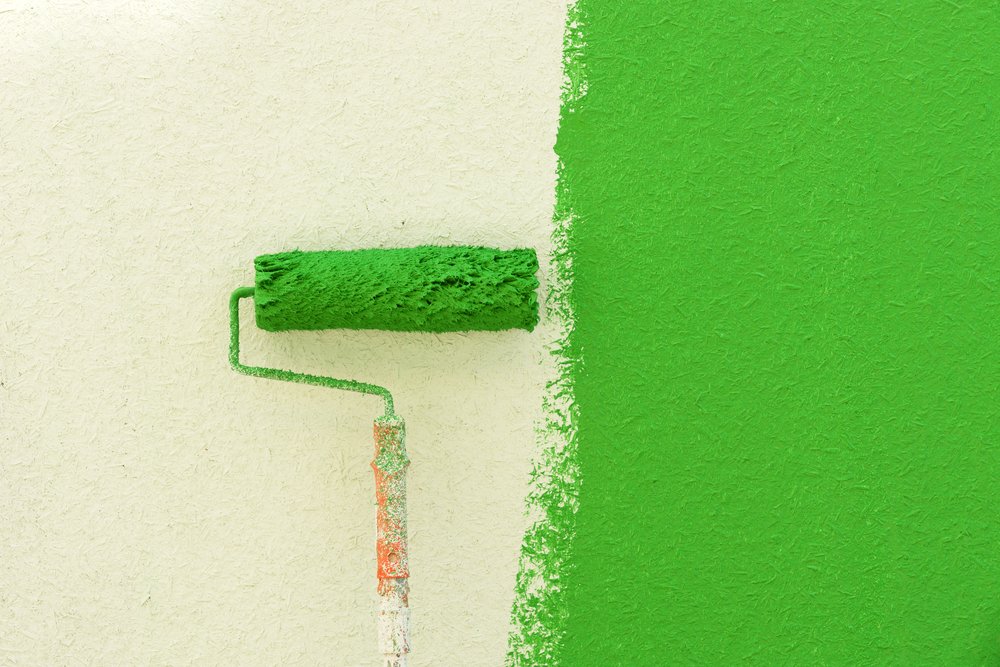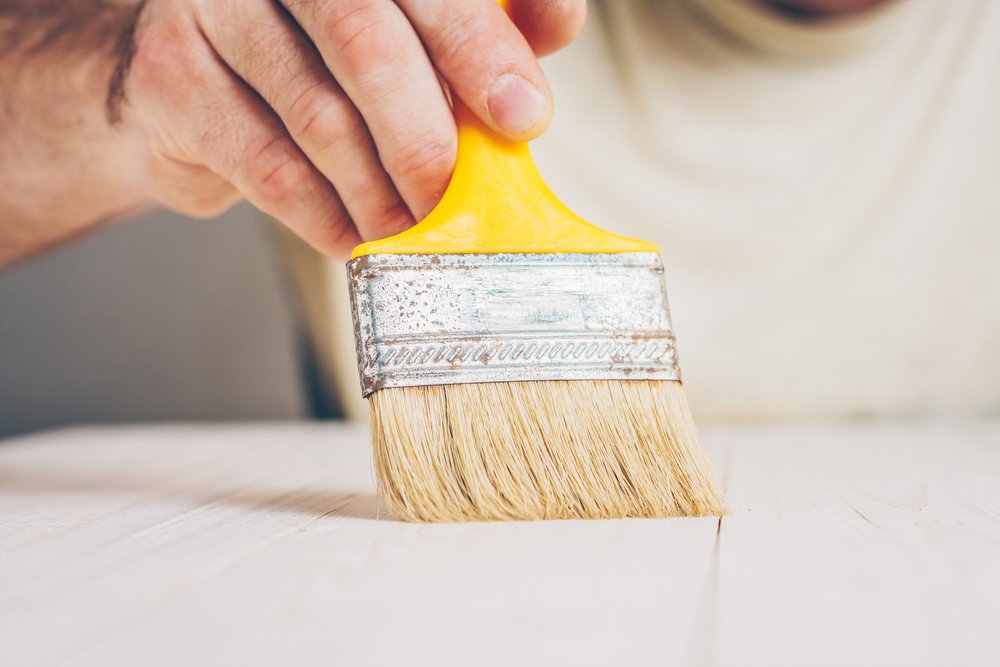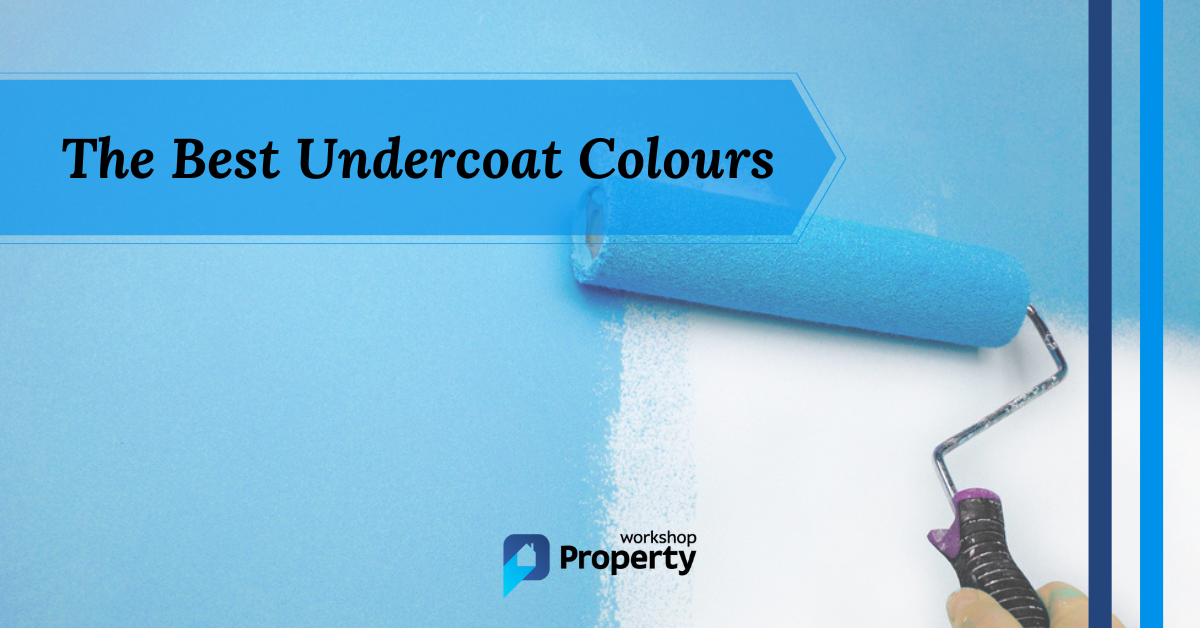Choosing an undercoat colour may seem unimportant because it’s hidden beneath the topcoat.
However, some colours deal with UV light better than others, so deciding what colour undercoat to use is important, as this determines how fast the pigment fades.
Factors like surface quality, heat absorption, UV light and any existing paint all affect your colour choice.
When To Use Light Undercoat
Lighter undercoats help neutralise bold colours. However, it only works when you’re transitioning from dark to light. So if you want to cover a brown wall, paint it with a white undercoat first, and you’ll have a blank canvas ready for painting.
A white undercoat reflects light, perfect for covering smooth surfaces and helps keep your room cool in the summer.
Furthermore, lighter colours give your room an airy feel, making them seem larger. Removing shadows expands the space, tricking the eye. However, too much white can seem cold and impersonal.
You might also consider a lighter undercoat if you’ve got pets and children. White walls are easier to keep clean because every stain is highlighted. While it’s an advantage for your cleaning regime, it also means you’ll be cleaning for longer than it takes to paint the Forth Road Bridge!
When To Use Dark Undercoat
There’s a danger that using a white undercoat weakens the depth of colour when painting a dark wall with a different, darker pigment. If that’s the case, choose a darker colour undercoat.
Moreover, use a darker undercoat if you’re looking for a cosy feel. Dark colours create a sense of warmth and seclusion and shrink the room’s appearance.
Pro Tip: Dark undercoats are ideal for imperfect surfaces because they reflect less light.
A colour-matched undercoat increases the finish’s depth and gives a streak-free, even coating. Some colours, like red and yellow, are hard to cover, so choosing a darker undercoat stops the red and yellow pigments from bleeding through and changing the topcoat colour.
Lastly, darker colours are great for children and pets because they hide stains like grubby handprints.
Pro Tip: If you lack the time, skill, or motivation to complete your painting project, find a trusted decorator in your local area on Rated People.
Key Factors When Deciding What Colour Undercoat To Use

Below are the other essential points to remember when choosing a suitable colour undercoat for your next decorating project.
Colour Durability
Lighter colours reflect sunlight, making them better at dealing with UV radiation.
Sunlight is brutal at fading darker colours faster than lighter shades. Look at your exterior paintwork if you want to know what UV does to paintwork.
Some colours fade faster than others. We spoke earlier about red and yellow, and these two colours are the worst culprits when exposed to UV rays. Remember, the darker the colour, the faster it fades because it absorbs more UV.
Surface Quality
According to Dulux, a low Light Reflective Value (LRV), combined with a low sheen level, scatters light rather than reflects it. If you’re worried that your surface quality is poor, this combination will highlight every imperfection.
Heat Absorption
Darker colours absorb more heat because they reflect less light. This effect causes heat expansion, putting more pressure on painted surfaces. Newer paint copes better with heat expansion while ageing paint breaks down.
Heat expansion also causes increased moisture, which creates blistering when you paint over existing painted surfaces with a darker undercoat.
Location
The heat that darker colours absorb is released through your walls to increase the ambient temperature.
If you live in the Outer Hebrides, this warming effect is perfect. I.e. it makes the most of the natural light and hopefully reduces your heating bills.
However, if you live in the south of England, you might want to consider a lighter colour to reflect more light and keep the room cooler.
Taste
Creating a black and gold homage to a mid-1980s lounge may be your thing, but others may not share your bold colour tastes. It’s why most people stick to neutral shades, especially landlords.
Plus, you want your home to feel light and airy, especially if you sell it. Now is not the time to release your inner colour extrovert because it could affect the value of your home.
Maintenance
Painting your walls with a darker undercoat and topcoat may seem like a great idea, but it does take some maintenance to keep them looking good. I.e. the colour fades faster in sunlight, showing every chip and scratch.
And when you get bored of living in a mocked-up Regency drawing room, you must consider the difficulty of transitioning back to lighter colours.
Application
The best way to apply an undercoat is with a brush or roller.
Your paintbrush should be two to three inches and have no-drop bristles. Always use a paintbrush to cut in around corners and door/window frames.
You can fill in the centre sections of the wall with a roller. If you want a super smooth finish, consider dry brushing out the air bubbles created by the roller.
When the paint dries, lightly sand the surface with 220-grit sandpaper.
Why Use an Undercoat?
Apply an undercoat if you want your freshly painted surfaces to look pristine for as long as possible. The undercoat gives the topcoat better surface adhesion.
You’ll also need an undercoat to transition from darker to lighter shades. Painting directly onto a bold colour with lighter paint makes the surface look patchy, and it also takes a lot more paint to get an even coating.
Topcoat is expensive, so don’t waste your money slapping three or four coats onto the walls when you can spend less using an undercoat.
The Difference Between Undercoat and Primer

Primer is used on untreated materials to seal and create a high-bonding surface for the topcoat.
You should never paint directly onto untreated plasterboard, brick and masonry, or fresh plaster without priming the surface first.
Primer contains fewer colour pigments and more binders, so it’s better for porous and lower-quality surfaces. It’s also why most primers are white.
You‘ll rue the day you skipped priming and applied topcoat onto a bare wall. I found out the hard way, so believe me when I say it won’t work! Topcoat paint is expensive, so all that lovely paint will absorb into the wall without a primer.
Primer also prevents several layers of paint from seeping or bleeding together. If the colours merge on the wall, you’ll have a muddy mess of colour.
Undercoat paint is similar to primer but with one key difference: it contains more colour pigment and fewer binders. If the wall already has a painted surface, choose an undercoat over primer to create a neutral surface for the new topcoat.
Undercoat paint is also better at preparing quality surfaces with lower porosity (e.g. plyboard). Plus, an undercoat enhances your colour depth if you want to create deep, brooding colours that feel warm and cosy.
You can buy an undercoat and primer-in-one, saving you time and money. However, these combined paints typically come in white, limiting your choice.
Final Thoughts
So, if you paint a darker wall with a lighter topcoat, use a neutral undercoat like white or cream.
However, if you’re covering a lighter wall with a darker topcoat shade, use a colour-matched undercoat to give depth to the finish.
FAQs
Below are answers to frequently asked questions about what colour undercoat to use when decorating.
What colour should my undercoat be?
Your undercoat should match as closely to the topcoat colour as possible. So if you’re changing from dark to light, choose a white undercoat to neutralise the bold shades beneath.
If you’re going from light to dark, choose a coloured undercoat to help deepen the final finish.
Does the colour of the undercoat matter?
The colour of the undercoat only matters if you’re trying to cover a darker wall with a lighter shade. For example, the lighter colour will struggle to conceal the paint beneath if you paint directly onto a brown wall with a white topcoat. It’ll take several coats to get an even coating.
Covering the wall with a cheaper white undercoat can neutralise the darker colour, ready for the topcoat.
Should I use a grey or white undercoat?
It all depends on the colour of the topcoat. You shouldn’t use a grey undercoat with a cream topcoat, but you can use a white undercoat with a dark topcoat.
Does it matter what undercoat to use?
White neutralises darker colours, while greys and other tones enhance darker colour topcoats.
Consider using a darker undercoat to add depth to your walls. The reverse is true if your goal is to reflect light.

